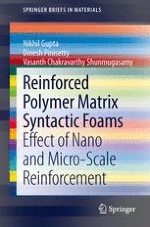Reinforced Syntactic Foams: Effect of Nano and Micro-Scale Reinforcement examines the fabrication processes, mechanism of reinforcement, and structure-property correlations of reinforced syntactic foams. The authors present the state of the art in this field, compare the properties of various types of syntactic foam systems comprising different matrix, hollow particle, and reinforcement materials. The book further identifies theories useful in predicting the properties of reinforced syntactic foams and conducting parametric studies to understand the possibility for tailoring their properties.
